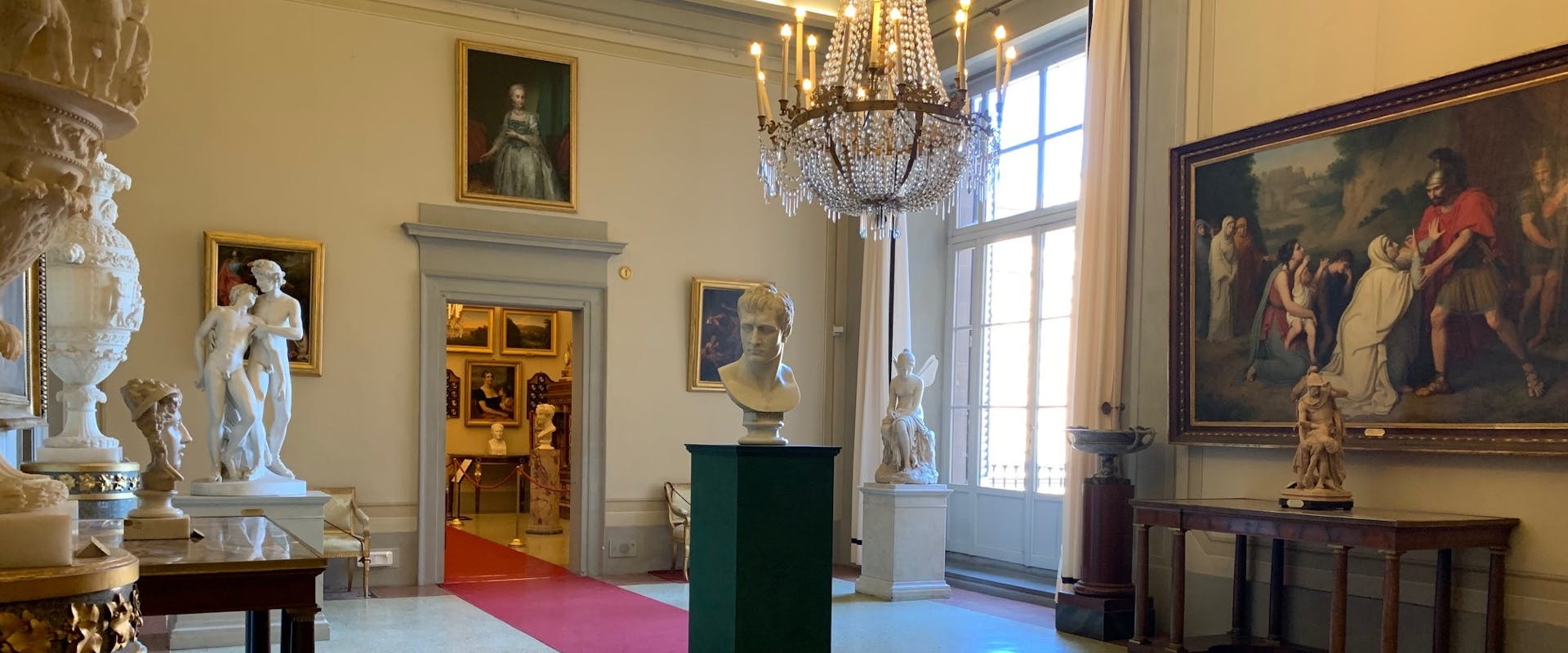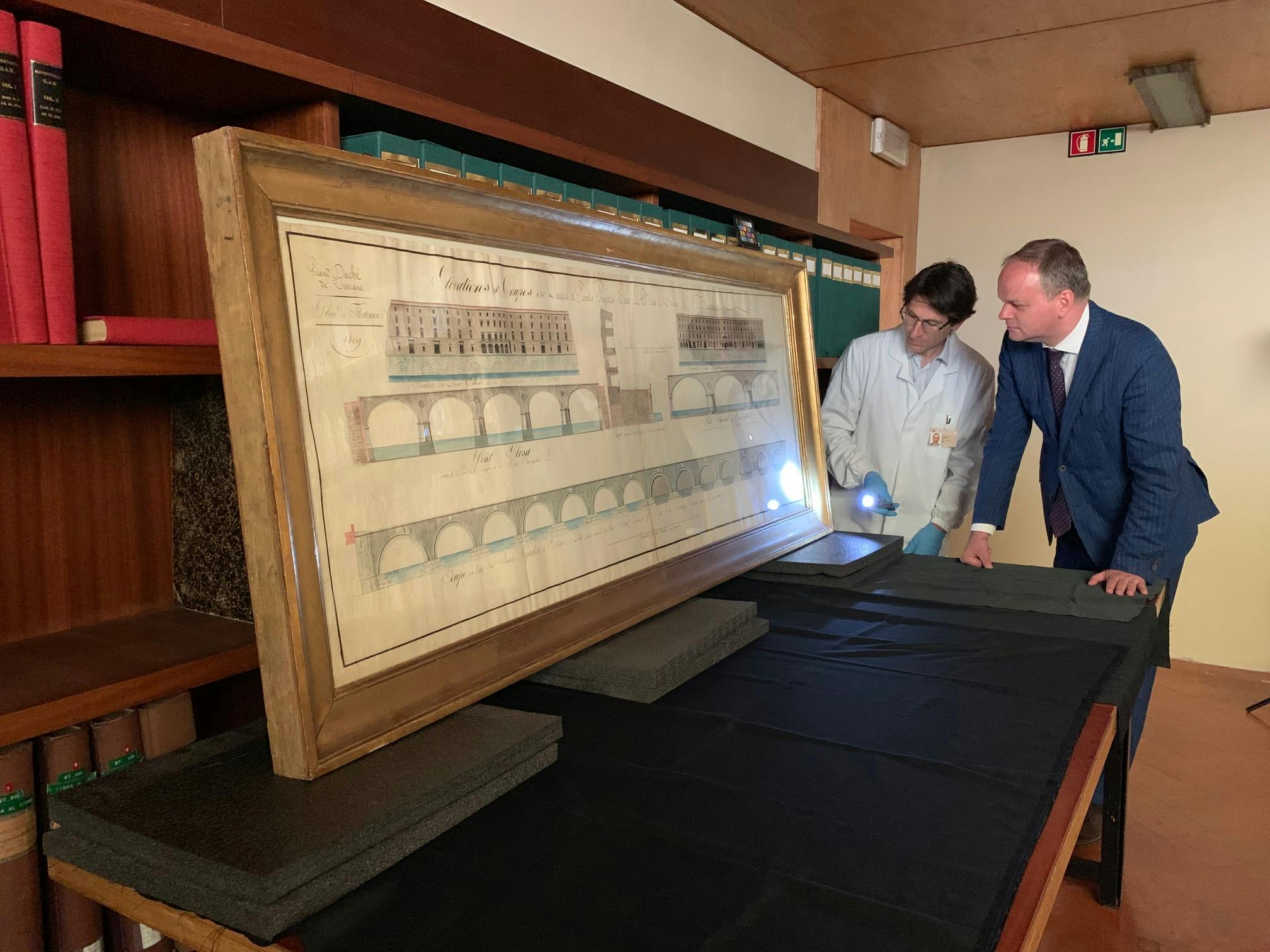The Uffizi Galleries and Napoleon's 250th Birthday
Two events to remember the important and controversial leader
The Uffizi Galleries remember the Napoleonic period of Tuscany, 250 years after the birth of Napoleone Bonaparte, 1769 August the 15th, with two events: the new display of the first room of the Modern Art Gallery in Pitti Palace, with the colossal marble portrait of the Bonaparte in the middle, and the acquisition of a project by Hyacinthe Boucher de Morlaincourt (1756-1831). This big drawing, purchased by the Uffizi Galleries, gives evidence of an important and unrealized project of the Napoleonic period in Florence. The architect Hyacinthe Boucher de Morlaincourt in 1809 projected two bridges to connect Arno River’s banks at the height of the Park of the Cascine. The bridges had to be dedicated to Napoleon and his sister Elisa Baciocchi who was in charge of governing all over Tuscany. According to Elisa’s vision, Florence was supposed to become a modern city: among other things, she wanted to connect green areas, such as the mentioned park, to the city centre through rearrangements of the riverfront and the realization of new bridges.
Napoleon was a great leader and a great reformer, although Italian cultural heritage suffered of dramatic dispossessions during his domination. Uffizi Galleries remember the Napoleonic Era because it meant also artistic patronage, thanks to Elisa Baciocchi's love for arts and archictecture, as we can see in Pitti Palace venues, such as the so called "Napoleon's Bathroom" in Palatine Gallery.

